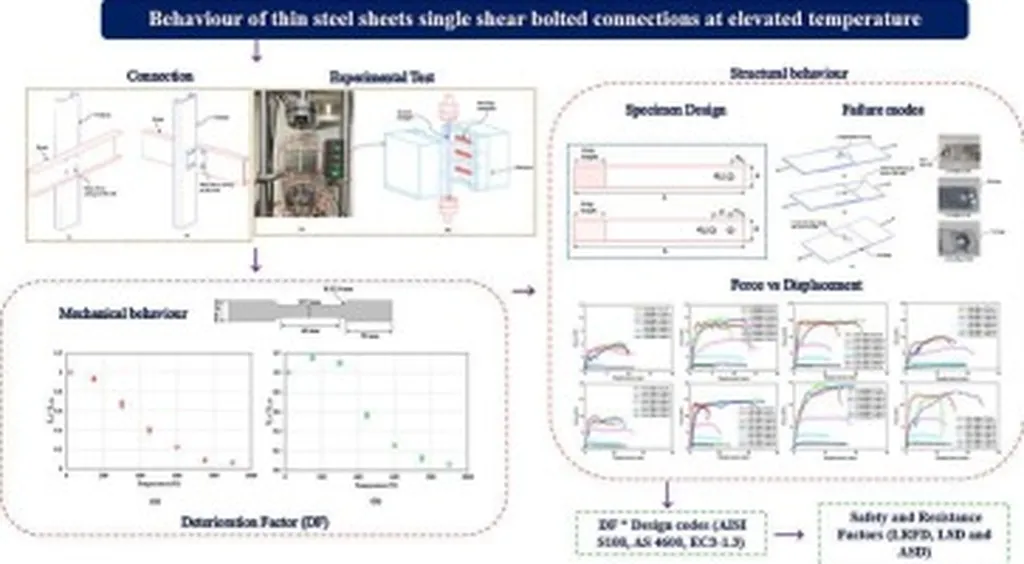In the pursuit of stronger, safer, and more reliable materials for critical infrastructure, a team of researchers led by Yixuan Xu from Beijing Jiaotong University has made a significant breakthrough in enhancing the performance of high-strength bolt steel. Their work, published in the Journal of Engineering Sciences, focuses on a process called low-temperature ausforming, which could revolutionize the way we think about material strength and durability in the energy sector and beyond.
High-strength bolts are the unsung heroes of modern construction, holding together everything from towering skyscrapers to sprawling bridges and complex industrial machinery. Yet, as industries push for stronger and more efficient materials, a persistent challenge has been the trade-off between strength and resistance to hydrogen embrittlement—a phenomenon that can lead to catastrophic failures.
Xu and his team set out to tackle this issue head-on. By employing a technique known as low-temperature ausforming, they subjected a V+Nb-microalloyed Cr–Ni–Mo high-strength bolt steel to a series of controlled forging processes, starting at around 950°C and finishing at approximately 625°C. This was followed by direct water quenching and tempering. The results were striking.
“The low-temperature ausforming process produced a fine-banded microstructure with pronounced grain elongation along the forging direction and a significant reduction in grain size,” Xu explained. “This fine structure not only increased the tensile strength of the steel but also dramatically improved its resistance to hydrogen-induced delayed fracture (HIDF).”
The team’s experiments showed that the low-temperature ausformed samples exhibited a 62.1% increase in notch tensile strength, a critical measure of HIDF resistance. Moreover, the hydrogen embrittlement sensitivity index decreased by 27.6%, indicating a substantial improvement in the material’s ability to withstand the deleterious effects of hydrogen.
“This is a game-changer for the energy sector,” said a senior engineer at a leading construction firm, who wished to remain anonymous. “High-strength bolts are used in some of the most critical applications, from offshore wind turbines to nuclear power plants. Any improvement in their reliability and durability has significant commercial implications.”
The enhanced performance of the ausformed steel is attributed to several microstructural changes, including the formation of polygonal ferrite and alterations in cementite morphology along the prior austenite grain boundaries. These changes not only strengthen the material but also make it more resistant to the brittle intergranular fractures that are typically induced by hydrogen.
As industries continue to demand stronger and more resilient materials, the findings from Xu’s research offer a promising path forward. By tailoring the microstructure and grain boundary characteristics through low-temperature deformation, engineers can potentially develop high-strength steels that are not only stronger but also more resistant to environmental degradation.
“This research is a testament to the power of innovative processing techniques in enhancing material performance,” Xu noted. “It opens up new avenues for developing next-generation high-strength steels that can meet the demanding requirements of modern infrastructure.”
The implications of this work extend beyond the energy sector, with potential applications in automotive, aerospace, and construction industries. As the world continues to push the boundaries of material science, the insights gained from this study could pave the way for safer, more efficient, and more reliable structures.
Published in the Journal of Engineering Sciences (工程科学学报), this research highlights the importance of interdisciplinary collaboration and the continuous quest for innovation in the field of materials engineering. As industries strive for greater efficiency and sustainability, the development of advanced materials like the ausformed high-strength bolt steel will play a crucial role in shaping the future of construction and infrastructure.

